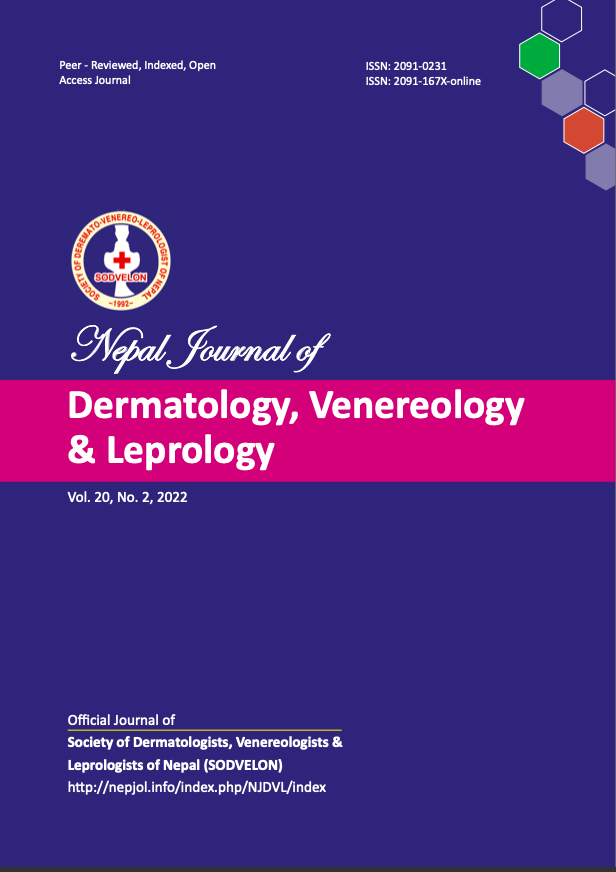Non-FDA-Approved Uses of Apremilast in Dermatology: A Review of Current Available literature
DOI:
https://doi.org/10.3126/njdvl.v20i2.45638Keywords:
Alopecia, Apremilast, Dermatitis, Dermatology, Hidradenitis suppurativa, VitiligoAbstract
Introduction: Apremilast, an oral phosphodiesterase-4 inhibitor, decreases the production of pro-inflammatory cytokines including tumour necrosis factor-α, interleukin-12/23, IL-12, IL-2, and interferon-γ; while upregulating the anti-inflammatory cytokine IL-10. Its pan-immunomodulatory nature has led to its use in managing various immune-mediated dermatoses for non-FDA-approved indications.
Objectives: To review and analyze the use of Apremilast in Non-FDA-approved indications in current available literature.
Materials and methods: PubMed, EMBASE, SCOPUS, and Google scholar databases were searched with the parameters “Apremilast”, “Apremilast NOT Psoriasis*”, “Apremilast NOT Behçet’s*”, and “Apremilast NOT arthritis*”. A total of 45 relevant articles were chosen for review.
Results: We found 22 indications in dermatology where apremilast has been used without FDA approval. The best evidence was for treatment in Atopic Dermatitis, Alopecia Areata, and Hidradenitis Suppurativa, with randomized controlled trials. Prospective open-label trials were found for Cutaneous Sarcoidosis, Lichen Planus, Rosacea, and Vitiligo. Individual case series and reports were found for Acrodermatitis Continua of Hallopeau, Dermatomyositis, Disseminated Granuloma Annulare, Erythema Nodosum Leprosum, Morphea, Pityriasis Rubra Pilaris, Hailey-Hailey Disease, Recurrent Erythema Multiforme, and Folliculitis Decalvans, Prurigo Nodularis, Perforating Dermatoses, Chronic Actinic Dermatitis, and Hand Eczema, and Epidermolysis Bullosa Simplex-Generalised Severe Type. Apremilast has shown varied efficacy despite a better safety profile and tolerability over a long duration compared to conventional immunosuppressant drugs and placebo.
Conclusion: Apremilast has been used for varied non-FDA-approved indications in dermatology with variable efficacy. Better controlled, randomized studies with adequate sample size and drug comparisons are needed for better analyses.
Downloads
Downloads
Published
How to Cite
Issue
Section
License
Copyright (c) 2022 Society of Dermatologists, Venereologists and Leprologists of Nepal

This work is licensed under a Creative Commons Attribution 4.0 International License.
Copyright on any research article is transferred in full to Nepal Journal of Dermatology, Venereology & Leprology upon publication. The copyright transfer includes the right to reproduce and distribute the article in any form of reproduction (printing, electronic media or any other form).




